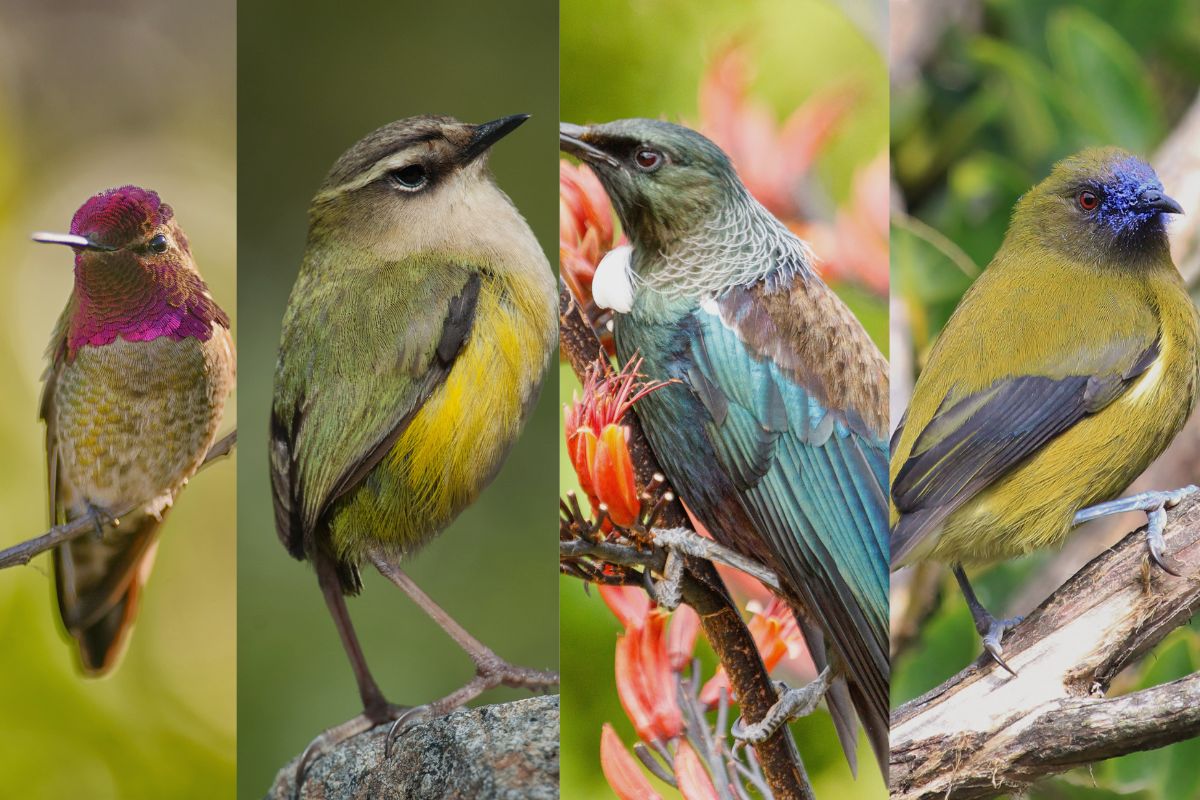New Zealand is renowned for its stunning landscapes, diverse wildlife, and thriving ecosystems. While hummingbirds are not native to this country, it is home to a wide range of fascinating bird species that are sure to captivate birdwatchers and nature enthusiasts. In this article, we will explore the native birdlife of New Zealand and discover some remarkable species that share similarities with hummingbirds.
Tūī (Prosthemadera novaeseelandiae)
One such bird is the tūī, a member of the honeyeater family and a native species of New Zealand. With their iridescent plumage, melodious songs, and lively behavior, tūī play a crucial role as pollinators within the ecosystem. They feed on nectar from native plants like flax (harakeke) and kōwhai, using their long, curved bills to access the sweet liquid. Although they do not hover like hummingbirds, tūī are incredibly agile and acrobatic, darting between flowers with impressive speed and dexterity.
Bellbird (Anthornis melanura)
Another nectar-feeding bird found throughout New Zealand is the bellbird, also known as korimako. Although they may not possess the vibrant colors of hummingbirds or tūī, bellbirds make up for it with their enchanting, bell-like songs that resonate through native forests. Like their honeyeater relatives, bellbirds have long, curved bills that allow them to sip nectar from flowers. These birds play a vital role in pollination and contribute to the overall health of New Zealand’s unique ecosystems.
New Zealand Rock Wren (Xenicus gilviventris)
While not a nectar feeder, the New Zealand rock wren shares some similarities with hummingbirds in terms of its size and appearance. This small, plump bird belongs to the Acanthisittidae family, also known as New Zealand wrens. Although their feeding habits and ecological roles differ from hummingbirds, their energetic movements and diminutive size may remind observers of their American counterparts.
Creating a Bird-Friendly Garden in New Zealand
Although hummingbirds may not be found in New Zealand, you can still design a garden that attracts and supports the local nectar-feeding birds. By planting native flowers and providing a safe habitat, you can enjoy the beauty of New Zealand’s unique avian fauna. Here are some tips for creating a bird-friendly garden in New Zealand:
- Plant Native Nectar-Rich Flowers: Choose native plants like flax (harakeke), kōwhai, rewarewa, and pōhutukawa that produce nectar. These plants not only provide a valuable food source for nectar-feeding birds but also contribute to the overall health of the ecosystem.
- Provide Fresh Water: Install a shallow birdbath or water feature to provide birds with a clean water source for drinking and bathing. Regularly clean and refresh the water to ensure the well-being of your garden visitors.
- Minimize the Use of Pesticides: Avoid using pesticides that can harm native bird populations by reducing their food sources and potentially poisoning them. Instead, opt for natural pest control methods and eco-friendly solutions when necessary.
- Provide Shelter and Nesting Sites: Plant a variety of native shrubs and trees to create safe spaces for birds to rest, breed, and raise their young. Consider installing nesting boxes specifically designed for your local bird species.
- Be a Responsible Pet Owner: Cats and dogs can pose a significant threat to native bird populations. Keep your pets indoors or supervised when outside, and consider using a bell on your cat’s collar to alert birds of their presence.
Appreciating New Zealand’s Unique Birdlife
While hummingbirds may not grace the skies of New Zealand, the country’s native birdlife offers a captivating experience of its own. By embracing and supporting the diverse array of nectar-feeding birds and other avian species that call New Zealand home, we can contribute to the preservation and appreciation of these extraordinary creatures.
Let the absence of hummingbirds in New Zealand serve as a reminder of the importance of protecting and cherishing the unique wildlife found in every corner of our planet. Through continued conservation efforts and a deepened understanding of our natural world, we can ensure that future generations will have the opportunity to marvel at the beauty and diversity of Earth’s many wonders.
